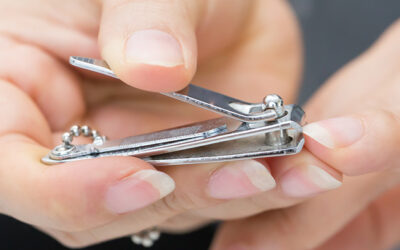
If you have siblings, you’ve probably experienced occasions when well-meaning folks said you look nothing like your sister or perhaps that you’re the spitting image of each other. And when you were born, relatives and friends felt the urge to say you looked just like your father or your mother! It is human nature for people to make these comparisons, but what does DNA have to do with it?
DNA contains information that determines eye color, hair color, height, and even the size of your nose. In fact, DNA contained in your cells is responsible for these physical attributes and many more. You and your siblings are a slightly different combination of your mother and father’s DNA. This explains why you and your sibling’s physical features resemble a combination of both parents and why your sister or even brother looks more like your mom than you do.
The Role Chromosomes Play
To fully understand how siblings inherit DNA from their parents, it helps to have a basic understanding of how X and Y chromosomes are passed down. Biological males have an X and a Y chromosome and biological females have two Xs. Fathers pass their X chromosome to daughters and Y chromosome to sons. Mothers pass down a mix of their two X chromosomes in a process called recombination.
Sibling Similarities and Differences Tied to Genes
But it’s not as simple as X and Y chromosomes. Human DNA is packaged in a total of 23 pairs of chromosomes that you inherit from both parents. Each of these have sections called genes that determine different physical features and traits. Your genes make up your genotype that determines your physical appearance (aka phenotype). Furthermore, genes can be either dominant or recessive. You inherit one gene from your mother and one from your father for each trait. And it’s possible to inherit a combination of dominant and recessive genes for each trait. When both forms of a gene are the same (e.g. dominant) this is called homozygous, whereas one of each is called heterozygous. This can result in many physical-characteristics differences between siblings and even fraternal twins.
- Male-pattern baldness can be passed down from one generation to the next, however, the DNA you receive may come from your mother, father, or even your grandparents. This explains why one brother experiences baldness while the other has a full head of hair
- A biracial couple in the UK had fraternal twin girls, one of whom inherited her English-born mother’s light brown hair and fair skin, while the other girl has black hair and brown skin like her father, who is of Jamaican descent.
- Two sisters are more likely to share many of the same gene versions compared to two unrelated women
- Height is determined by more than 100 genes and each child in the same family gets a unique, complex combination of these genes from their parents. If one parent is tall and the other short, the child’s height can be similar to one or the other, although it’s usually in between the two. Random gene assortment can lead to a child being substantially shorter or taller than both parents and explains why siblings can vary greatly in height
Do Siblings Share the Same DNA?
Siblings share much of the same DNA, but recombination explains why it is possible for siblings to have different DNA mixtures that give each their distinct look. Due to recombination, each chromosome you get from your mother is a mix of her parents’ chromosomes and each chromosome you got from your father is a mix of his parents’ chromosomes. With that said, if you and a sibling took a DNA test, it would reveal long stretches of common DNA letters. These segments are referred to as a DNA match.
Full Siblings: Each child with the same biological mother and father inherits an estimated 50% of DNA from each parent, but not the exact same half. A portion of the DNA full siblings inherit will be the exact same DNA from both parents. The siblings will match at the same location on their DNA on both the mother’s and father’s strand of DNA.
Half Siblings: Unlike full siblings, half siblings only match DNA on the one parent they share in common. On average, half siblings share about 25% of their DNA. Typically, half-sisters with a common dad share more DNA than a half-brother and half-sister due to how X and Y chromosomes are passed to children. But due to the mix of the other 22 pairs of chromosomes, it’s a remote possibility for a half-brother and sister to share as much DNA as same-gender siblings.
Do Fraternal Twins Share More DNA Than Siblings?
Fraternal twins are siblings who share the same womb. Each starts out as a separate egg fertilized by a separate sperm. Therefore, fraternal twins don’t share more DNA than any two siblings, which is 50%, however, they may look more alike than other siblings in the family.
If you’ve been thinking about ordering a sibling test, you’ve come to the right place. DDC offers the latest technology and accurate testing to resolve questioned biological-sibling relationships.




0 Comments